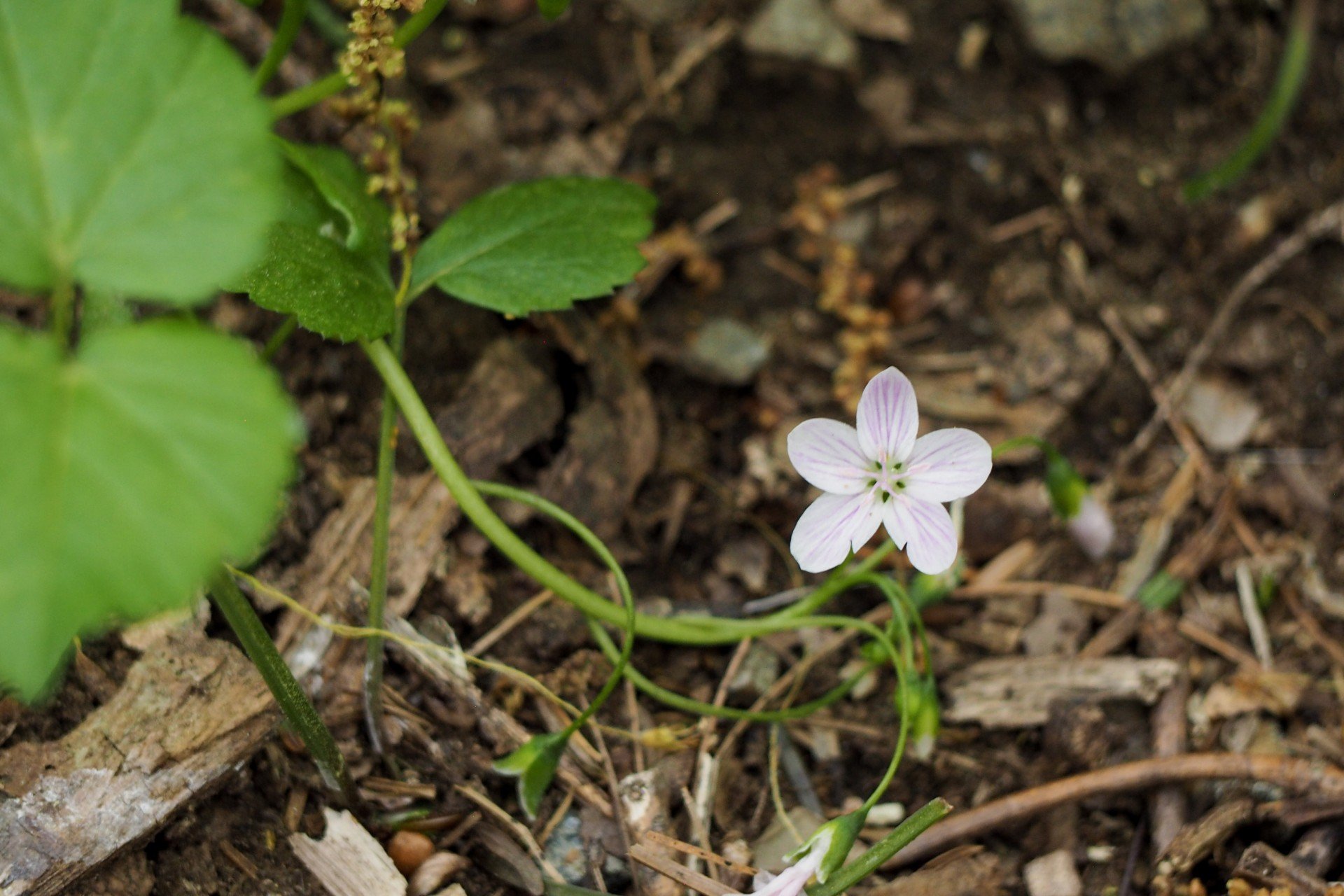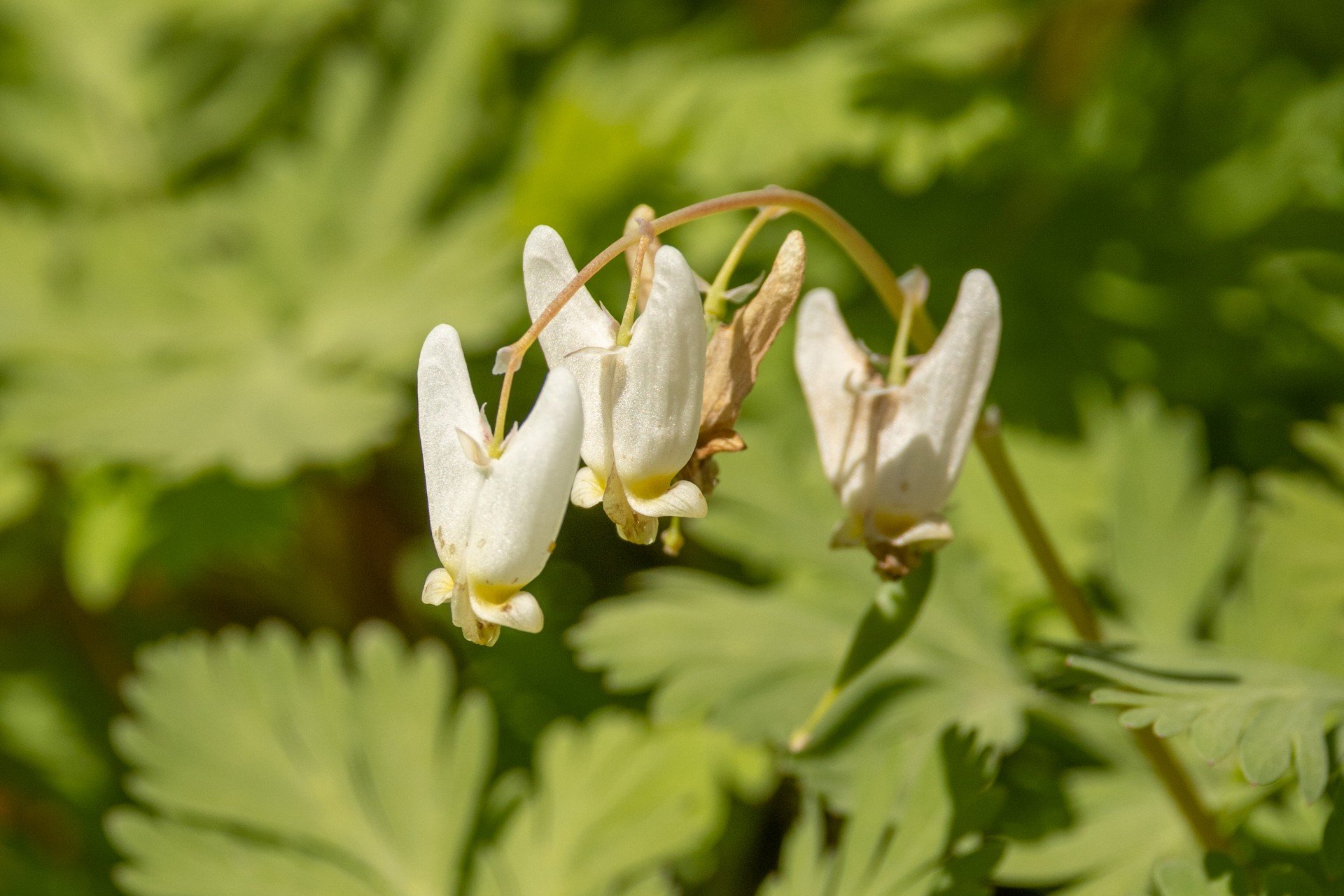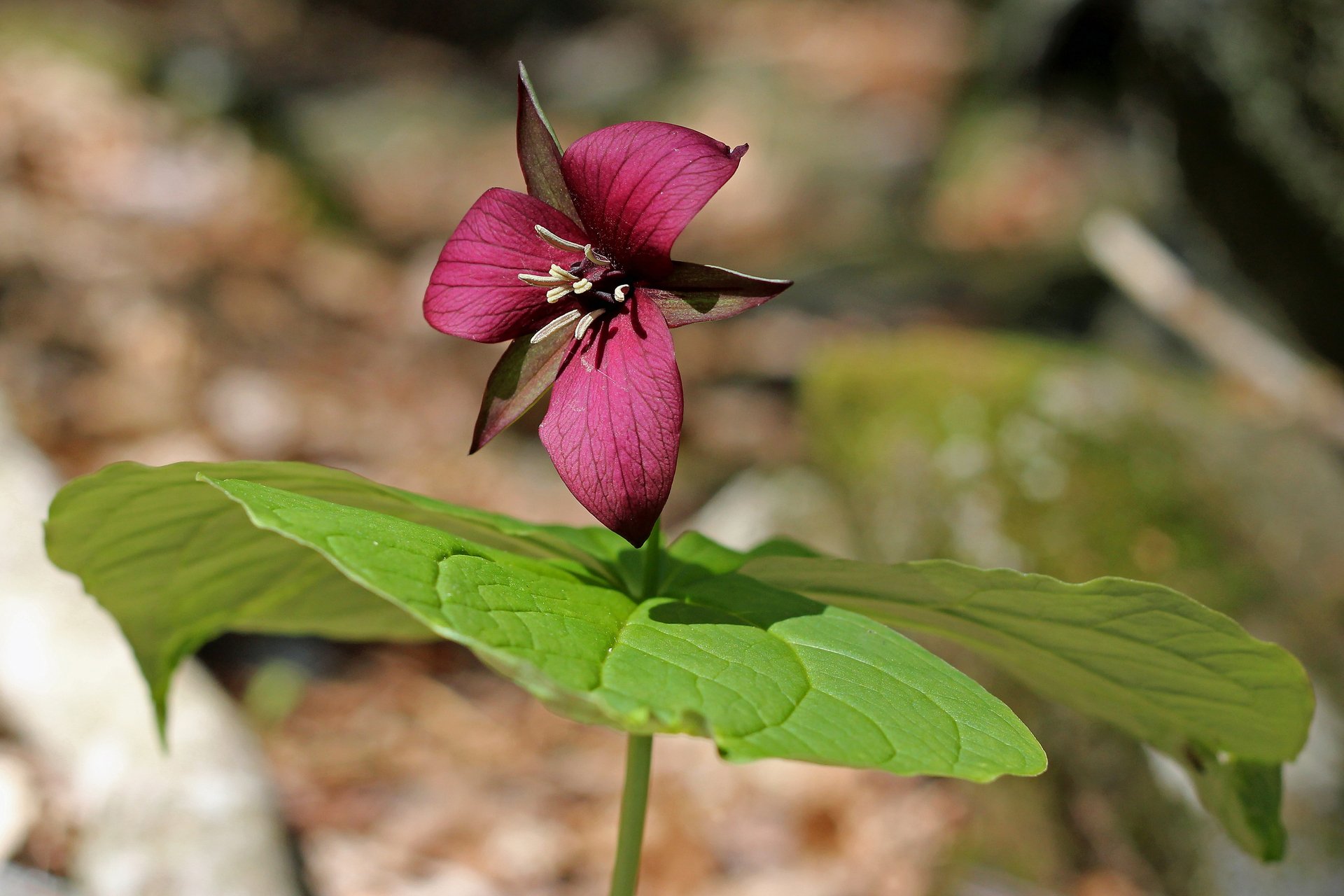Spring's Fleeting Blooms
April 16, 2025
Early spring marks prime time for a small handful of whimsical flowers to shine: spring ephemerals. Only around for a moment, these native short-lived plants emerge earlier than most species, popping up in early April and sticking around for several weeks until mid-May.
A keen eye can transform your next early spring walk into a floral treasure hunt.
A Narrow Niche
Spring ephemerals take advantage of the brief period after the snow melts but before trees leaf out. During this short window, the moist ground and unobstructed sunlight allow them to grow and bloom. While they look delicate, these hardy flowers thrive in what for other plants would be harsh conditions. Some are easy to find, such as Bloodroot, while others are rarer, such as Trailing Arbutus.
Our earliest pollinators, such as bumblebee queens, Mining and Cellophane Bees, early butterflies like Eastern Commas, ants, flies, and beetles, rely on spring ephemerals. As the first nectar and pollen sources, ephemeral blooms play an essential role in setting up pollinators for a successful season. Spring ephemerals grow across Massachusetts, from the coast to the mountains. With a wide range of habitats, Mass Audubon’s wildlife sanctuaries offer ample opportunities to discover a range of spring ephemerals.
Four Spring Ephemerals to Look For
Since most ephemerals prefer moist woodlands, hit the trails that head into the forest. Scan the ground for one of these fan favorites and see what else you can find.
Carolina Spring Beauty
The pink stripes of the Carolina Spring Beauty’s small white blooms lead to blush-hued pollen. The Spring Beauty Mining Bee takes advantage of this early nectar source, leaving the flower toting pink pollen on its legs.
Dutchman’s Breeches
Upside-down, the white and yellow flowers of Dutchman’s Breeches resemble a pair of pantaloons. They are pollinated only by bumblebees, and newly emerged, overwintered queen bumblebees rely on this early food resource when establishing their colonies for the season.
Red Trillium
Aptly named for its three petals, trillium grows in a few different varieties in Massachusetts: red, white, and painted. Their rhizomes, or underground stems, allow these flowers to blanket wooded areas. Red Trillium, also called “stinking Benjamin,” emits a foul odor meant to attract its primary pollinator, Carrion Flies.
Jack-in-the-Pulpit
This pitcher-like plant emits a fungal odor to attract fungus gnats, its main pollinator. Jack-in-the-Pulpit employs a sneaky strategy wherein its “hood” traps the gnats inside the flower after they lay eggs, so they have no choice but to escape out of the bottom. Now dusted with pollen, they are ready to deposit it into the next Jack-in-the-Pulpit they are deceived into entering.
Protecting These Small Wonders
Given their incredibly narrow niche, shifting snow cover, and climate change, some spring ephemerals are endangered, including Violet Wood Sorrel and Showy Lady’s Slipper. By protecting their habitats, fostering healthy ecosystems, combatting the loss of biodiversity, and mitigating the impacts of climate change, we can work to protect these fascinating species.
Note: Always enjoy viewing spring ephemerals, but do not pick or collect them. Their survival hinges on their ability to spread their seeds from year to year.
Where to Look
Some of our top spots include:
Broadmoor Wildlife Sanctuary, Natick
Wachusett Meadow Wildlife Sanctuary, Princeton
Arcadia Wildlife Sanctuary, Easthampton/Northampton
Upcoming Wildflower Programs
See MoreSpring Wildflower Exploration on Pleasant Valley's All Persons Trail
-
Pleasant Valley Wildlife Sanctuary, Lenox
-
Thursday, April 24
10:00-11:00am
Adults
Seasonal Landscapes Series
-
Online
-
5 classes starting
Tuesday, April 29
7:00-8:30pm
Adults
Spring Wildflowers at Arcadia
-
Arcadia Wildlife Sanctuary, Easthampton
-
Saturday, May 3
9:00am-12:00pm
Adults
Seasonal Landscapes: The Forest Floor
-
Online
-
Tuesday, May 13
7:00-8:30pm
Adults
Spring Wildflowers at High Ledges
-
High Ledges Wildlife Sanctuary, Shelburne
-
Wednesday, May 14
9:00am-12:00pm
Adults
Spring Wildflower Walk at The Mount
-
The Mount, Edith Wharton's Home, Lenox
-
Wednesday, May 21
2:00-3:30pm
Adults
Stay Connected
Don't miss a beat on all the ways you can get outdoors, celebrate nature, and get involved.






